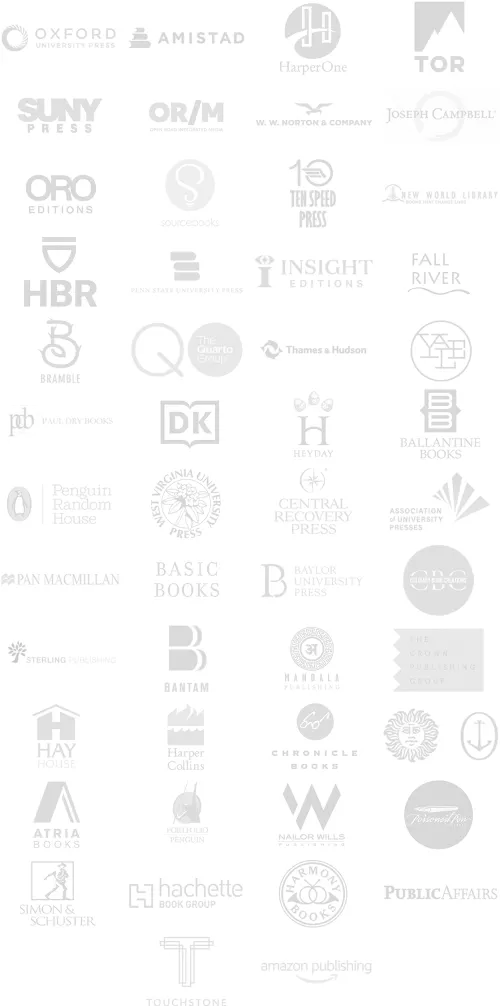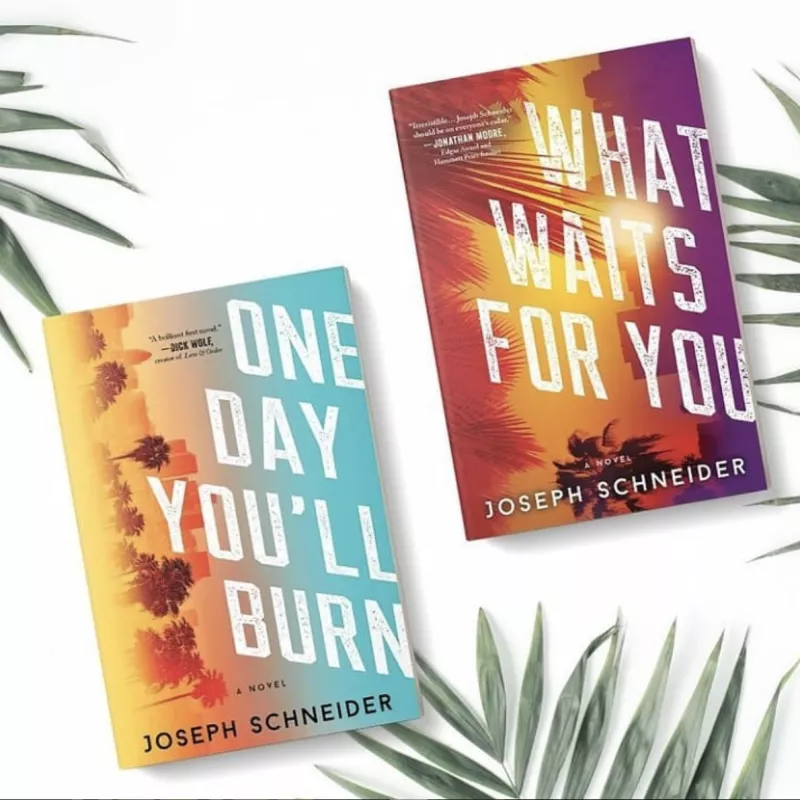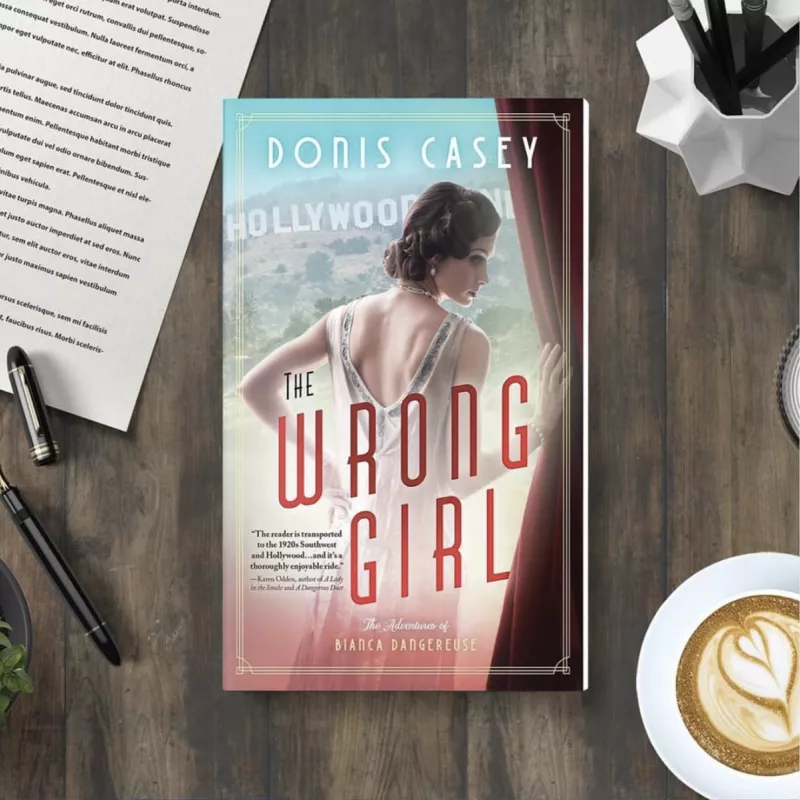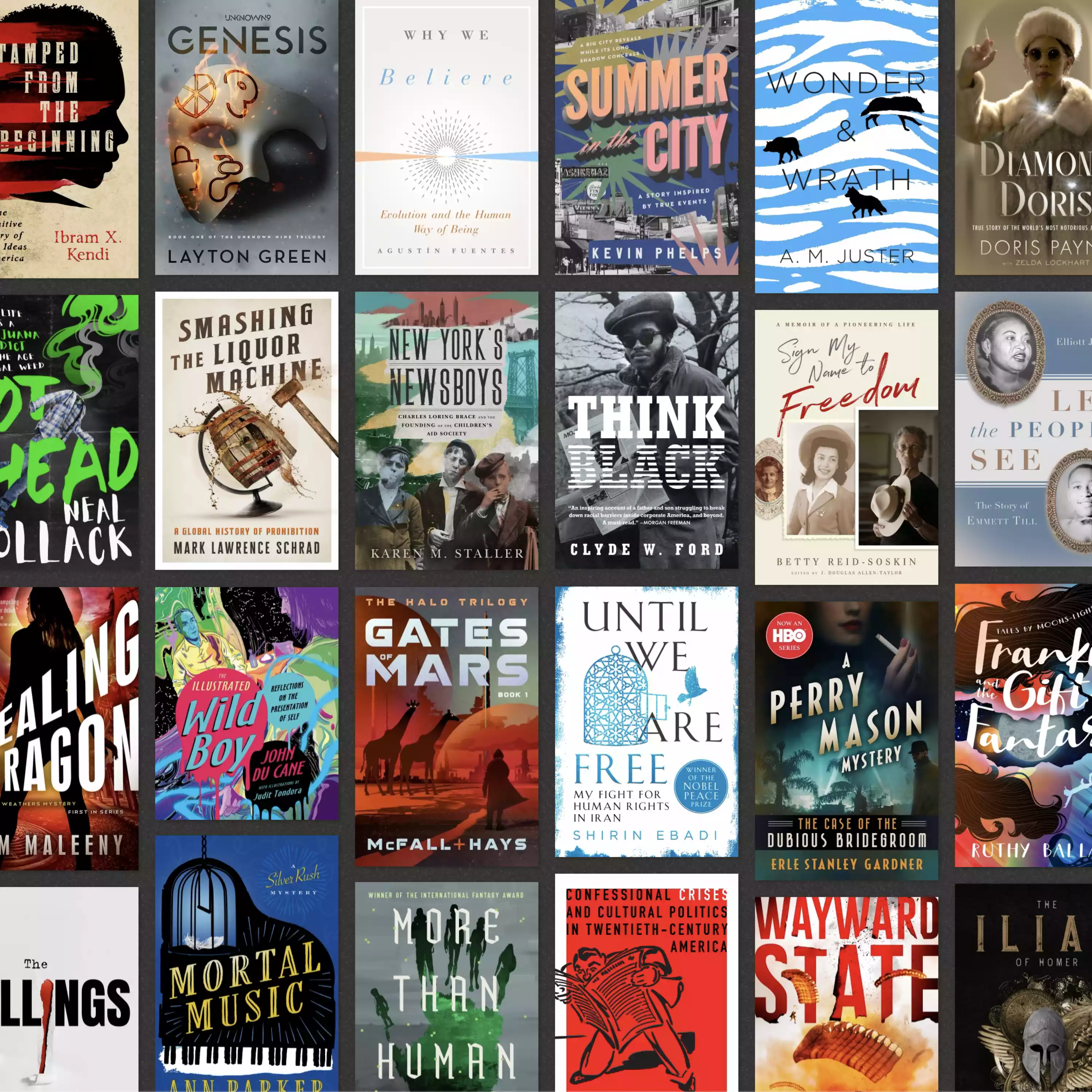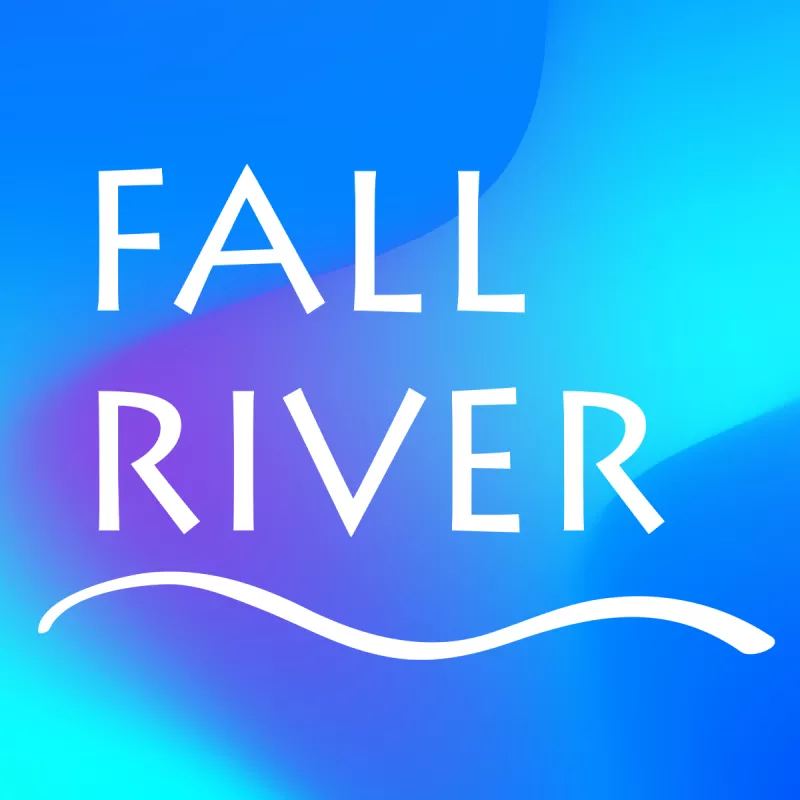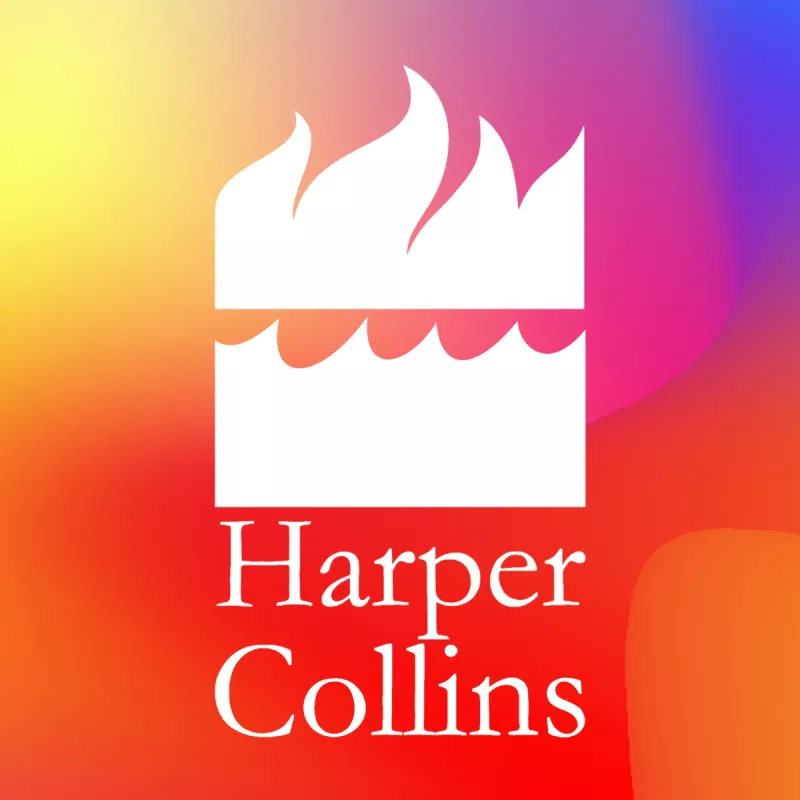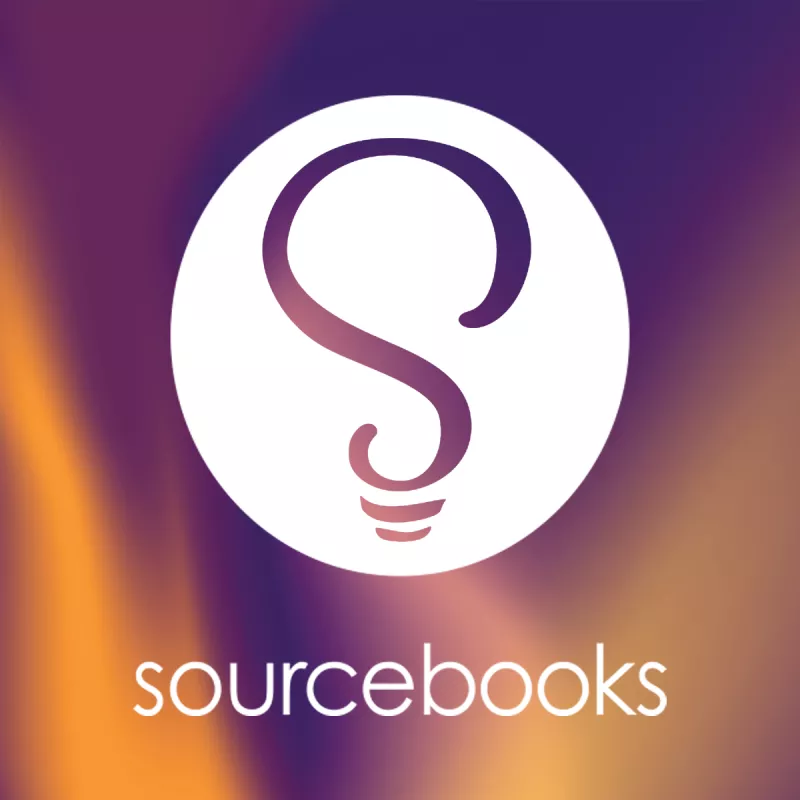theBookDesigners
One-stop book design, and more!
Books and Interiors
From design to print, and beyond!
- Book Cover Design
-
We’ll start the process of designing your cover by asking questions, reading your manuscript and researching your audience and competitive titles. We’ll provide you with a range of custom cover designs to choose from, and will work with you to achieve the desired look that is right for your audience. And yes, books are judged by their covers. Take a peek.
- Book Layout Design
-
Whether you’re publishing a simple text-driven book or have many images, charts, graphs, pull quotes and sidebars to include, we’ll make sure your book layout is consistent with the cover design, typographically attractive, readable and engaging. Our experience with interior book layout ranges from the simple to the most complicated formats featuring various specialty printing and binding techniques, paper types, removable posters, glued-in pockets and much, much more. We’re invigorated by the challenge of making a book’s interior be as spectacular as its cover. Have a look at some of these book layouts.
Going the Distance
Once upon a time a lovely book needed to be read…
- Production & Print
-
Throughout the process of designing your book, we’ll take great care to make sure we are preparing it for the inevitable—being printed and reproduced at the highest quality and standards. Making sure your book is prepared properly for the printer of your choice is a big part of the job. We’ll make sure your files are prepared and ready for press, in addition to following all the necessary guidelines your printer may provide. We use a number of domestic and overseas printers and are well versed in print-on-demand (POD) technologies and printer options. We’ll help guide you through the detailed process.
- e-Book Conversions
-
Most books are destined to be read on some digital device. We will take your beautifully designed book and convert it to the e-Book format of your choice, so that your audience can connect with your work easily across various devices.
Get the Word Out There!
Tools to help you engage with your audience
- Book Trailers
-
Book trailers are a wonderful way to get in front of your audience and get them excited about reading your book. Our trailers range between 40-60 seconds—typically enough time to give your audience a glimpse of your upcoming title in an engaging video that can be used in a multitude of marketing venues. Staying in concert with the design that was developed for your book, we’ll work closely with you to develop a memorable video clip that can be shared on various social media outlets.
Check out our book trailers. - Author Websites
-
An author website provides an essential meeting place to connect with your audience, a place where readers can meet you as an author and interact with you. We can design and program a site for you that is clean, easy to navigate, informative and engaging.
- Branding
-
Our branding service is very much focused on giving your company a professional appeal. That may include developing an elegant logo for your indie publishing venture, or creating essential marketing collateral in the form of business cards, brochures, displays, advertisements and more. Success in the field of publishing is greatly affected by how your brand is portrayed. We make sure that your brand is consistent across all of your marketing venues.
a Final Touch
It’s all in the details. What makes you stand apart?
- Editorial services
-
We collaborate with a network of editors to bring your book to top form. Making sure your book reads well is as important as the design and layout. We can provide both manuscript editing (also called copyediting or line editing, but distinct from developmental editing) and proofreading, and/or pair you with an editor to really overhaul your manuscript and make sure it’s ready for its debut.
- And more!
-
We would love to speak with you about your specific needs and goals. Every project is different and has many moving parts. We’ll work with you to define your vision and give it an attractive package.
Rates
General Pricing: We work with many budgets. These are our typical offerings.
What's included
- 3-6 unique cover concepts
- 3 rounds of revisions
- Preparation of press ready files
Most popular
What's included
- 3-6 unique cover concepts
- Text book layout design (no images, 200 pages)
- 3 rounds of revisions of both the cover and layout
- Preparation of press ready files
What's included
- 3-6 unique cover concepts
- Book layout design with extas (graphs, images, charts etc)
- 3 rounds of revisions of both the cover and layout
- Preparation of press ready files
What's included
- 3-6+ unique cover and layout concepts
- Explore various printing/packaging treatments
- Develop various marketing tools for your book sales
- Preparation of press ready files
The above rates are our most common fee structures, we would be happy to discuss your project in detail to get a better sense of your unique needs and get you an estimate. Take a look below to see other services that may be useful to you.
Addons
We offer a variety of additional services that go beyond our usual offerings. Take a look and see how we can help you take your book further.
-
E-Book Conversion:
We offer e-book conversion of your book for all major mobile/e-reader formats at an additional charge. We will use either a fixed layout or fluid/responsive (text/images reflow and adjust depending on what e-reader someone uses) epub formatting, depending on the complexity of the design or your need to retain the exact flow and styling of your content.
- Price varies Based on page count or layout complexity
-
Printing:
We use a varied network of printers, both domestically and overseas. We would love to get you a print quote and explore various printing and binding treatments that would benefit your book.
- Price varies Based on print run
-
Short-run, Custom Printing:
Sometimes you require a small print run of 500 or less copies of a book. Maybe it's for a family photo album, a high-end photography book, portfolio, or annual report. Often these types of projects benefit from some specialty printing treatments and binding. For such project, we work with Edition One Books, who specialize in high-end custom printing.
- Price varies Based on print run
-
Book Trailers:
Using the design that was developed for your book, we'll work with you to develop a memorable, custom book trailer that can be shared on various social media outlets. We strive for a run time of about 40 to 60 seconds.
- starting at $800
-
Editorial Services:
We collaborate with a network of editors to bring your book to top form. Making sure your book reads well is as important as the design and layout. We can provide both manuscript editing (also called copyediting or line editing, but distinct from developmental editing) and proofreading, and/or pair you with an editor to really overhaul your manuscript and make sure it's ready for its debut.
- Price varies Based on word count
-
Author Website:
An author website provides an essential meeting place to connect with your audience—a place where readers can meet you as an author and interact with you to whatever extent you wish. We can design and program a site for you that is clean, easy to navigate, informative and engaging.
- starting at $3500
-
Author/Publisher Branding:
Our branding service is very much focused on giving your company a professional appeal. That may include developing an elegant logo for your indie publishing venture, or creating essential marketing collateral in the form of business cards, brochures, displays, advertisements and more. Success in the field of publishing is very much dependent on how your brand is portrayed and consistently applied across all of your marketing materials.
- starting at $500+
FAQ
- What information do you need from me for a custom quote?
-
Fill out the online form on our quote page, and we will contact you to discuss the details of your project. Things that are useful are: A word count (if we will be doing the interior design), a synopsis of your book, what you envision for your cover (this can be ideas you have or covers you are attracted to that have the look and feel you are hoping to achieve), and any other information that may be helpful for us to quote your project. Knowing if you need a book interior, how many images you have, whether you will be needing custom work done related to tables, charts, graphs or photo-editing, maps, illustrations and so forth—these are all very useful. It’s also good to know if you need an ebook.
- What is the book cover design process?
-
Even before you are done with your book, we can get started on the design. When you send us your rough manuscript with your key points, we will use our 3-round process to deliver a design that you love. We utilize a 3-pass approach for every phase of the process. Starting with the book cover, we present you with a range of design ideas (typically 3-6 initial concepts), then refine them in 3 rounds of back-and-forth feedback. Once a cover is approved, we go back and forth another 3 rounds to further polish it. This thorough and efficient process allows us to give you a cover even better than you imagined.
- What is the process for designing the books interior?
-
When we design sample interior pages, we base them on the approved cover aesthetic. We present you initial samples of a table of contents, introduction/preface/foreword, and a first chapter as well as any other pages that might need special treatments. This way, you get a feel for the design throughout the book before we begin the design of the entire book. We will choose appropriate fonts and text sizes for the body text, headings, chapter pages, etc. We then refine the chosen sample over 3 rounds to come to a final design template for the interior. We can also design several options (usually 3) at an additional cost, but generally, we design one sample design that we feel works cohesively with your book cover.
Sometimes a book interior may need many images or tables/graphs/charts and other elements. We generally ask that those be supplied to us, ready for usage. If any of those need to be created or adjusted, we can include the cost in our initial quote to you. - Do you offer editing and proofreading services?
-
Before incorporating your final manuscript into the design, you’ll want to make sure it’s as clean as possible. A copy editor can help you sift through your ideas on a higher level, while a proofreader will help catch the smaller spelling and grammar errors and typos. We can refer you to our qualified team of editors and proofreaders.
When your book design is complete, a final proof is necessary to catch any typos and errors that have inevitably popped up. You can either review it yourself or hand it off to our proofreader at an additional cost.
We go through 3 rounds of review to resolve any editorial issues and make design adjustments before the final proof. Your approval of the final book interior is needed before we proceed to print. - When do you design the full cover (front, spine, back cover and flaps, if applicable)?
-
Once we have designed all of your books interior pages, we will confirm with you about your printing solution. Some folks use Amazon KDP or Ingram Spark or similar self-publishing solutions. We will need several pieces of information before we design a full cover (front, spine, back and flaps):
1. A final page count of your book.
2. The paper thickness/type that you will print on.
3. All final copy/text to appear on your full cover. This can be testimonials, author bios, book description, publishing information etc)
Once we have that we can know the thickness of your book and either request a template from your printer of choice that has the proper spine width.
You already have a great front cover—now, we’ll develop and integrate the back cover and spine (as well as flaps if needed). Depending on your project, we can also provide designs for dust jacket flaps, a case cover, endpapers, or any specialty bookbinding needs. After review, the full final cover will be ready for the printer. - How long does the entire design process take?
-
Typically we will have a cover concept for you to review 3–5 days before starting the project. After that, we will go back and forth a few times to try to achieve the desired result. Once we have approval on a cover, we will create a sample interior design for your review. This typically takes 3–5 days. Once again, we will go back and forth with you a few times before continuing on to the full layout, which typically takes about 1–3 weeks depending on a number of factors (e.g., design complexity and extent of feedback/changes). Most simple, text-driven books will be a 1- to 2-month process from start to finish.
But generally, the cover design process takes about 2-3 weeks depending on feedback and complexity. Usually, we deliver initial concepts for a cover and sample layout within about 3-5 days of quote approval and receiving all the information we need from you. A general, full book design (including a cover, and 200-300 pages with modest image usage throughout) takes about 4-6 weeks from start to finish. This can be sooner based on design complexity and efficient feedback. - How much will the fee be for me to design and print 50-500 copies of my book?
-
Our general design rates would apply, so starting at $750 with additional fees depending on the inclusion of certain options and services. To be clear, we are not printers. However, we work with many printers, and while we'll look for a perfect printer for you, most of them won't handle small print runs. The cost of printing is not included in our basic fee structure. It is quoted from one of our trusted printing vendors. If you are looking for a small run, your best bet is using a POD (print on demand) service like Ingram Spark, Lulu or Amazon's KDP. They will be able to accommodate a small print run, and we are more than capable of getting your files ready for POD printing. Companies like Blurb may also offer options for smaller custom print runs. We do work with Edition One Books, who specialize in high-end custom printing, binding, and small print runs.
- Are there any additional fees that we should expect to encounter throughout the design/layout process?
-
Occasionally a project goes beyond our estimated parameters and the need arises to expand the initial budget to cover our additional time. This scenario is rare, as we take necessary precautions to ensure it doesn't happen. It is possible, however, though you would be notified of any additional fees well in advance. Other costs that may be incurred relate to the licensing of images (often photography or illustration) from outside sources such as stock-image agencies or commissioned independent artists. If the need arises for such work in your project, we'll consult with you and present a revised estimate before proceeding.
- Do you provide information about the copyright page/barcode/ISBN number?
-
We generally request that it be provided to us. Bowker is a good resource from which to obtain ISBN numbers with barcodes.
- Are your rates industry standard?
-
Yes. In most cases, professional book cover design fees start at $1,500. But the general range is $800–$1,500 for a book cover, and about the same for a simple text-driven layout design. While there are many companies and freelancers that may offer significantly lower rates, it's usually very apparent in the final product. With nearly 20 years of experience in publishing, we pride ourselves on a thorough knowledge of the publishing industry. We work with many of the top publishing houses and have helped countless indie publishers get the exposure they deserve. Many of our indie clients take advantage of our other services as well, as they find it's convenient and results in a more consistent visual tone for all of their various marketing needs. We'd love to discuss your specific needs and see how we can work together to create something we're all proud of.
- I don’t live in California. Will I still be able to work with you?
-
Of course! Our clients are from all over the country and world. We can easily communicate via email and phone and share files online. In fact, both Ian and Alan live in Oregon and California respectively.
- What’s the difference between a publisher and printer?
-
A printer is in charge of the physical manufacturing of your final printed book. So, they do the printing and binding. A publisher takes on many tasks in getting a book to the public—editing, design, legal, marketing and distribution. Our part in the process is primarily in designing your book, but we also offer some other services at an additional cost. We are happy to consult with you about many aspects of both printing and publishing at additional cost, but in general we are happy to answer general questions and concerns as part of the process when you are working on a project with us. We will guide you through the process and explain things as we move through your project and questions arise naturally.
- What services do the Book Designers offer, other than designing?
-
While we focus on design, we can offer additional services along the way—just ask us and we can either take care of it or point you in the right direction. We provide editorial and indexing services, as well as manuscript review, at an additional cost. We do not offer web design or printing services in-house, but we can refer you to reputable solutions and work with those outfits to create appropriate designs. We do offer design for logos and marketing/promotional materials for your book or publishing imprint, just let us know!
- How does your quote/estimate work? What payment methods do you accept?
-
Once we both agree on an estimate, you will sign and return a copy to us. This becomes our Master Service Agreement. We require 50% down to start, and the balance due at the finalization of the project. We accept checks, bank deposits, and credit cards (with a 3% fee).
We do have a "boilerplate" attached to most of our service quotes. This is often a few pages of "legal" language that protects us and describes in more detail what our final offerings are and commitment/responsibility to you. This is largely a bunch of legal language we hardly understand (in all honesty) and in 25 years have not had a reason to refer to it or do much with it. Read it over. If you have a problem with any of it we are happy to adjust it or put your mind at ease. We are super easy to work with and quick to communicate to answer any concerns. - What’s the difference between page design and typesetting?
-
When designing the interior of the book, we use a two-part process. First, we create the page design, then we typeset. The page design refers to the overall look of the inside of your book, which includes everything from font and margins to photos and pull quotes. Once we finalize a design, you review it and approve it. Typesetting is where we apply all the design elements to each page of your book. The end result being your manuscript looking like it will when printed. We will implement any edits and changes and then ready the file for the printer.
- How can I provide feedback on your designs?
-
We ask that all feedback be written in a concise bulleted list, focused on the aspects of the work that are helpful to move the process forward. Email is best as we have a paper trail to refer to. We can discuss things over the phone as well, but we still ask that you re-cap in an email to create a proper paper trail of all feedback. We ask that all feedback be as straightforward as possible and stay on task. If things are not working for you with our design solutions, just tell it to us straight. We have thick skin.
For book interior samples and full layouts, we ask that all feedback be marked up digitally in your pdf file, which you can send back to us via email. Again, keep your feedback as simple and concise as possible to avoid confusion. - If I already have an idea for my cover, how can I share that with you?
-
Sometimes you already have a very clear idea of what you want for your book cover design. Maybe you have specific photographs or illustrations or have already worked on it with a previous artist or designer. That is perfectly fine and saves us all time. We are happy to take your idea or finished cover files and develop the specific idea or finish preparing the files for print.
You can send the files to us via email or a file-transfer platform like Dropbox, Hightail or We-Transfer. If you are sending images to us, please make sure the files are at a quality that is ready for print. Normally for print, we need files that are at least 300 dpi and large enough for printing. File formats like jpegs, tiffs, photoshop files, or eps files are all fine. We will explain everything to you if you have any questions. - I already have my cover done. Can you work with me to do the rest of the book?
-
Yes, we offer our services a la carte. We can take your existing cover and build an interior that works with it. We’ll finish the design process for you.
- Where do you get images and photos? Can you provide custom work?
-
We use stock houses that are free of charge to our clients (we have license agreements with them) to achieve an illustrated, photographic or typographic solution. We can develop some maps, charts, tables, graphs and illustrations at an additional charge based on complexity. We do not offer traditional illustration services (original art or paintings, hand lettering or photo shoots), but we can put you in contact or sub-contract the work if it’s needed.
- I need my manuscript edited and proofread. Can you help me?
-
Throughout the design process, we will alert you to any typos or mistakes we notice. But we suggest you bring in a professional editor or proofreader. We can refer you to our qualified team. We do need your manuscript to be fully edited and proofread before we can design the full book. While we will certainly be making editorial corrections based on your feedback throughout the process, it makes things smoother to have a manuscript fully edited before we start designing the full book.
- How should I deliver my images to you?
-
We will need high-resolution (300dpi at the size they need to be reproduced or larger) images delivered in a separate folder from your manuscript. You can indicate the placement of the images within your manuscript by inserting brackets in the appropriate places you would like your images, indicating the name of the image you would like. This can be indicated in red to alert us to the image call-out.
- Do I need to provide a copyright page?
-
We can supply the template; you will need to fill in the ISBN # and Library of Congress control number. There are also many samples online of various different styles for copyright pages. They can be very simple or very complex—it's up to you!
- What is an ISBN# and how do I get one? Do I need a barcode?
-
ISBN stands for International Standard Book Number and is a 13-digit number used to identify each published book as unique. Most bookstores will not feature or sell any book that is not first listed within their warehouse database. To get there, your book must have a unique ISBN. You can apply for an ISBN at myidentifiers.com or go to bowker.com to buy as many as you need (often you may need several if you are publishing both a hardcover and paperback or e-book). You will need to have a barcode if you wish to sell your book online or have it distributed in any way in stores and so forth.
- How do I register with the Library of Congress?
-
Once you have your ISBN #, you can register with the Library of Congress by visiting www.loc.gov/publish/pcn/. We recommend Bowker.com which offers ISBN services.
- How do I get my book on Amazon?
-
You’ll need to set up a seller account by visiting kdp.amazon.com. We can assist and answer questions, but Amazon KDP and Ingram and other print-on-demand/self-publishing servicers usually are easy to use and have their own teams to answer technical questions. We generally do not do the upload process as it requires a number of steps we cannot do for you, such as setting up a credit card and answering specific questions related to your book that only you would know.
- Will the Book Designers own my files and archive them?
-
While we do not provide archiving services and are not responsible for your files after completion of the project, we can supply native files upon request. "Native files" are the actual files we created in our design programs (Usually Adobe software) and would include all the fonts and images as well as print-ready layout files.
- Do you help with any self-publishing needs I may have like marketing materials, logos for publishing, websites and helping with distribution?
-
We are a design studio and that is our main objective. However, we have been at this for over 20 years! So yes, we can offer consultation for additional cost, but generally we are more than happy to answer most questions as they arise, free of charge. If there is further need for additional design material for promoting your book, we do offer some of those services and would love to hear what you have in mind. We can create Facebook/YouTube/Twitter/Instagram banners, posts and more. We are adept at creating logos for publishing companies and are happy to either help design or suggest a design studio for website needs. Let us know and we can offer solutions and suggestions.
- What do these terms mean:
-
Throughout the process of designing your book, you will often hear a few of the following terms. If you are uncertain about what they mean, please ask us! We love to shed light on the workings of our industry and craft. Here are a few terms that you may find useful.
-
This refers to the dimensions of your physical book, as well as your page size. The two may or may not be the same, depending on if you are doing a hardcover (hardback) with a dust jacket or a softcover (paperback). While there are standard sizes for books (that fit well on most shelves and are easy to hold and read), there really is no “standard size." We'll discuss what your best options are, of course. Sometimes they're based on the type of printer you choose, other times they're determined by the orientation of images in your book or other design and layout considerations.
-
This is the amount of pages to which your book flows. So it's not your raw manuscript in question, but rather the file that we have designed and prepared for you. The number of pages found in that file will be your page count. Your book's page count influences many factors: the cost of your book, the spine size, the thickness and feel of your book in a reader's hands, binding types and more. We will help you achieve a page count that suits your needs.
-
This often refers to the actual word count of your raw manuscript file. Knowing it allows us to gauge the amount of pages your book will be in a normal, readable font size.
-
Images that are destined to be printed on paper need a resolution of roughly 300 to 400 dots per inch (dpi). This refers to the quality of your images. Images that are not at the correct size/resolution for printing will print poorly, often lacking sharpness and clarity or appearing pixelated. You can expect them to print out blurry and look cheap and lower in quality. An image resolution of 72 dpi up to 250 dpi is often too small for reproduction unless the size is very large. We can determine if your images are adequate for print reproduction and help you achieve the best possible image resolution—and therefore the best possible result.
-
The term RGB stands for red, green and blue. This is the light source/color space with which your computer screen displays images. While some things may look great on-screen, they will not reproduce with the same tonal quality or vibrancy they appear to possess when viewed on a monitor.
The color space/mode/range that most printing presses use is called CMYK, or cyan, magenta, yellow and black inks. These four inks are used in the printing process to achieve all arrays of colors needed for most printing. Occasionally special inks may be employed to achieve a certain level of vibrancy in an image. A common color system used for specialty inks is Pantone. All files destined for print must be converted from the RGB color space to CMYK, in order for them to reproduce properly. We will guide you through this process, but in most cases it's not something you need to worry about. -
Most simple text layouts use a single color: black. This is typical of most text-driven books or books using standard black-and-white photographs (halftones). One-color printing is generally used for book interiors. However, a cover may sometimes look best in a single color as well (though rarely). Two- and three-color printing is referred to as duotone or tritone. These printing processes use black and one or two additional accent colors typically. It may prove to be a nice touch to have an accent color throughout your book, as opposed to just using a standard black. Usually this type of printing, beyond just black, will incur additional printing costs. Four-color printing uses the CMYK color mode, although special inks may be substituted. Four-color printing is for books that require the reproduction of photographs and images in their original/full-color ranges. So, in most cases, photography books, architectural books, cookbooks and the like will benefit from a four-color (CMYK) printing process. Additional printing features like varnishes (used to bring out colors and preserve ink on paper) can also be applied, as well as a matte varnish/finish.
-
Book binding can take many forms: basic softcover, hardcover with jacket, case wrap (hardcover but no dust jacket), perfect binding, exposed binding and more. Binding basically refers to how your book pages are stitched together, or glued to a book block (the paper or chipboard that houses your book's pages).
Most projects require paperback (a flexible cardstock cover) or hardcover (a thick chipboard with a printed case wrapping) with dust jacket binding. We can help you explore other options, including slipcases (external cases that books can slip into), clamshells (box-like structures that books can be housed in) and much more. -
Also known as printer's proofs, these are samples sent from the actual printing press that show how your book cover and pages will print (usually these are big, untrimmed sheets). While an additional cost is incurred to see the proofs, it's well worth it in terms of gauging how your book will actually print. We'll look over the color proofs with you to see if there are any refinements that can be made to achieve the best final result in the printed piece.
-
Sounds lovely, doesn't it? Well, it is. In fact, this printing process allows you to print only one copy of a book, if that's all you need. As with traditional printing, it may cost you more to print fewer books. Nonetheless, books are only printed when they are needed. POD printing is often a great option for the self-publisher/indie author who doesn't want to end up with a pallet of books in their garage that they have yet to discover an appropriate distribution channel for. We will assist you in deciding what your most economical printing options are.
-
If you look at how a book's pages are grouped together, you will see that they are bound in sections. These sections are groupings of pages that allow the book to be bound in the best possible way, ensuring durability. They also allow for the glue to bind properly to the spine of your book. The page signatures are important in some cases because they can dictate how many pages the book needs to be. A book may need to either stay under or above a certain page count, based on signature allowance. This is something we remain mindful of when designing your book layout.
-
Most of the art we use on our covers or interiors is sourced from various stock sites. In most cases we strive to use royalty-free images. Royalty-free means that you won't need to worry about paying additional fees for the images—the cost will be included in your original estimate. Once in a while, images may need to be sourced from rights-managed stock websites. In such an instance, you may need to pay an additional fee to use them. Prices vary, but rest assured you will be informed of our desire to use any such image well in advance of us charging you for it. We're nice like that.
The reason we may want to use a rights-managed image is simple: we can't always find the right images elsewhere, and we just happened to find the perfect image on a rights-managed website. We will do everything we can to try to use royalty-free art, but sometimes there's no way around it. What can we say? There are lots of photographers and artists out there doing great work and they want to get paid for it. Rates depend on how much of an image we use on the cover or interiors of your book. Sometimes we use a fraction of an image; other times we use the whole thing. Your licensing agreement with the stock house will stipulate how much it will cost you, how long you can use it for, if you can use it in other marketing ventures, etc. Again, we will guide you through the process and make sure you're getting what you need. -
The amount of copies of your book that will be printing.
A few of our clients include…
